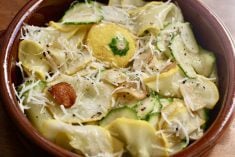My sister-in-law and brother are heading off to British Columbia to a family reunion. At the lake each year, the hall is busy with family reunions. What constitutes a successful reunion?
I have a great little book called Fun Family Reunions in 8 Easy Steps! This book helps us to remember the little things that matter most at a gathering, large or small. It is described as a sanity guide for busy and smart people, and helps with the fine art of delegating.
The authors, Shelley Loewer and Melody Cahoon, state that imperative to the success of your reunion is recognizing and meeting the needs of babies and toddlers, teenagers, spouses who may feel left out, and immediate family members who need time to visit and reminisce. They describe how to plan a reunion in eight easy steps:
Read Also

Farm auctions evolve with the times
Times have changed. The number of live, on-farm auctions is seeing a drastic decline in recent years. Today’s younger farmers may actually never experience going to one.
Step one – Centre the reunion on a theme.
Step two – Choose an appropriate location and time to suit the families’ needs and budgets.
Step three – Invitations should be sent out months ahead, with a reminder later.
Step four – To keep costs down, funding suggestions are included.
Step five – Fun activities for all ages are a must.
Step six – Potluck food is divided up according to how many hours you must travel. The authors have included some recipes for quantity cooking.
Step seven – Have only one hour of entertainment, no more. Original ideas are provided.
Step eight – Delegate to dependable people or experts.
If you are seeking more information, this book is available from
Lions Den Publishing, Box 8462, Saskatoon, S7K 6K5.
Readers’ requests
In reply to a request in the June 20 column, A.Z. from Sifton, Man. found ladies’ coveralls (lined and unlined), kids coveralls, insulated winter coveralls and summer coveralls as well as materials to make coveralls, including thread and zippers, at the following address: Workwear Plus, R.R. #2, Mount Forest, Ont., N0G 2L0. Also, available at this address are work pants for women or men, socks, boots, mitts, work gloves, t-shirts, underwear, jackets, shop coats and mechanic’s aprons. For more information on sizes, colors, and prices, phone toll-free 1-800-267-1429 or 519-323-1341 or fax 519-323-3665.
Dear TEAM: Regarding the poem “Come Little Leaves,” I’ve had the words for years, but I never knew it could be sung. Could someone please send me the music or perhaps a tape? – H.K., Dauphin, Man.
A cooking apron
For a great barbecuing apron, try this easy-to-make, one-size-fits-all apron that Aunt Leone made for my mother. One square yard of fabric (90 sq. centimetres) will make the apron, and 45-inch (115 cm) fabric will make an even longer apron. You may wish to make the tie and pocket in contrasting fabric.
Fold the fabric lengthwise to cut out the pattern pieces, according to diagram one below. Cut out the curve for the armholes, measuring in from the edge of the fabric. With the remaining fabric, make the 1.5-inch (four cm) armhole casing for the tie to slip into.
Turn under top, side and lower edges of apron 1Ú4 inch (six mm) to finish edges. Then attach casing to armhole area. Make the fabric tie 1.5 x 80 inches long (four cm x 205 cm) or longer, and slip it through the casing, or use a braided cord or fabric rope. The tie is the key to the adjustable fitting apron.
If you wish to have a pocket, make it 8.75 inches x 10 inches (22 cm x 25 cm), and place it 2.5 inches (six cm) from the centre of the apron, as in diagram two. To decorate the apron, use contrasting fabric, topstitch with contrasting thread, or use fabric paints, applique, ric-rac, lace, or denim to suit your taste.
A special bread
Dear TEAM: Recently, a TV program showed how to make foccacio. One part was for fruit and one for vegetable filling. The base was a yeast dough with rosemary spice. The dough was flattened in a pan, as for pizza, and sprinkled with olive oil, then covered with slices of cooked, unpeeled potato and parmesan cheese and sprinkled with olive oil. It was baked at 450 F (230 C). In the fruit recipe, the dough was spread and sprinkled, as above, and filled with diced apples, cinnamon, brown sugar and cranberries. Both these recipes had been sprinkled with olive oil before baking. No doubt there are other fillings, but I’d like the recipe for the dough in question. – J.M., Vegreville, Alta.
Dear J.M.: I found this foccacio recipe in Marjie Lambert’s The Bread Machine Book, published by New Burlington Books, London. They suggest serving wedges of this hearty bread as an hors d’oeuvre, or with a meal instead of garlic bread. Instead of butter, dip pieces in high quality olive oil. This bread is best served warm. This recipe makes a one-pound (0.5 kilogram) loaf. I made it by hand since I no longer have a bread machine.
Foccacio bread
2Ú3 cup water 150 mL
2 tablespoons olive 30 mL
oil
1 teaspoon salt 5 mL
2 cups bread flour 500 mL
11Ú4 teaspoons yeast 6 mL
1 -2 minced garlic 1-2
cloves
1 teaspoon dried 5 mL
rosemary
1 teaspoon coarse 5 mL
salt
2 tablespoons olive 30 mL
oil
2 teaspoons grated 10 mL
parmesan cheese
Put first five ingredients in bread pan in order suggested by your bread machine instructions. Set on white bread, dough stage.
Preheat oven to 400 F (200 C). Lightly sprinkle cornmeal on a baking sheet.
Remove dough and punch down. Let dough rest about five minutes. On a lightly floured surface, roll dough into a round, about 1Ú2 inch (one centimetre) thick. Place dough on baking sheet.
Sprinkle the garlic, rosemary and coarse salt over the top, then lightly press into the dough. With your fingertips, poke shallow indentations all over the top of the round.
Pour the remaining olive oil over the top, letting it pool in the indentations. Sprinkle parmesan over
the top.
Bake bread until lightly browned, about 20 minutes.
Using up rhubarb
Since your plants may still be producing, I have included a rhubarb wine recipe from May Sather’s Rhubarb Recipes and More, Swift Litho Printing. Recipe books are available at 306-375-2853.
Rhubarb wine
4 pounds rhubarb 2 kg
6 pints boiling 3.5 L
water
Cut the rhubarb fine and put in a crock. Pour boiling water over rhubarb and press well to extract juice. Leave for four days to infuse. Strain off liquid and measure. To each gallon (4.5 L) of juice add 2 1Ú2 pounds (one kg) sugar, 1Ú4 ounce (eight g) yeast, juice of 1Ú2 lemon, juice of 1Ú2 orange.
Add yeast (which can be spread on a small piece of toast or mixed with a little of the liquid) and sugar and citrus juices to rhubarb liquid and leave to ferment in a warm place, 65-75 F (19-23 C). When bubbling ceases, stir well. This will take four to six weeks. Leave for another three days for the sediment to settle. Then strain through flannel or very thick muslin into a cask. The cask must be completely filled, otherwise your wine will taste like vinegar.
Cork and leave for six months. Pour into bottles, cork and store in dark place to mature for another few months at least.














